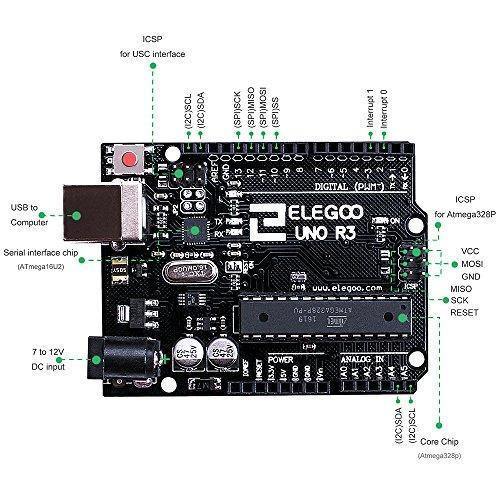WEEK 2:
The Electronic Brain
Aaron Siegel | | Spring 2025Sensing and Actuating
Light
Sensors:
- Photoresistor
- Photovoltaic
- Infrared
- Ultraviolet
Actuators:
- Incandescent
- Halogen
- Fluorescent
- Light Emitting Diode (LED)
- Electroluminescent (EL) Wire
- Noble Gas
Sound
Sensors:
- Microphone
- Piezoelectric Transducer
Actuators:
- Speakers
- Piezoelectric Transducer
Touch/Haptics
Sensors:
- Buttons/Switches
- Resistive
- Capacitave
- Sonic
- Optical
- Thermometer
Actuators:
- Vibration
- Force Resistance
- Peltier Cooling
- Joule Heating
Orientation
Sensors:
- Accelerometer
- Gyroscope
- Tilt Switches
Actuators:
- DC Motor
- Servo Motor
- Stepper Motor
- Solenoid
- Brushless Motor

Microcontroller
- Programmable Logic: C code to determine the response to input from sensors and the appropriate output to actuators. Code is saved on the microchip even after being unplugged from USB and after being disconnected from a power source.
- Power Regulation: Can take DC input between 5 volts and 12 volts and regulate it to 5 volts or 3.3 volts for output to circuits. Can be plugged into an AC/DC adaptor or run off of a 9 volt battery. Also can receive power directly over USB.
- Communication: Serial interface to communicate to computers over USB or to other circuits.
Position in Space
- Latitude
- Longitude
- Altitude
- Indoors
- Home
- Work
- Shared Environment
- Outdoors
- Urban
- Suburban
- Rural
- Natural
- Public Space
- Parks
- Courtyards
- Sidewalks
- Streets
Position in Time
- Hour
- Day
- Week
- Month
- Year
- Lifetime
- Day/Night
- Season